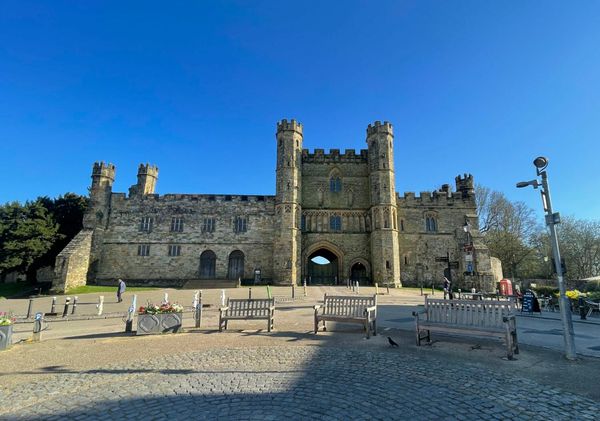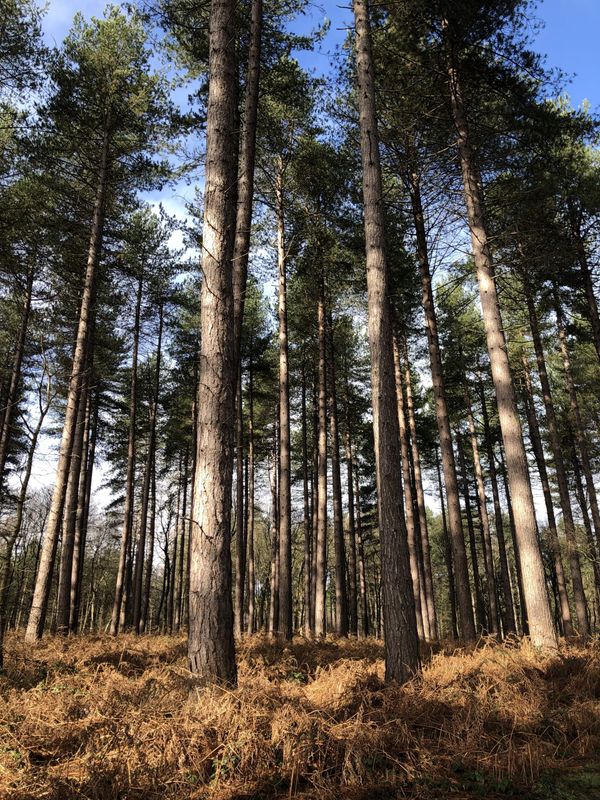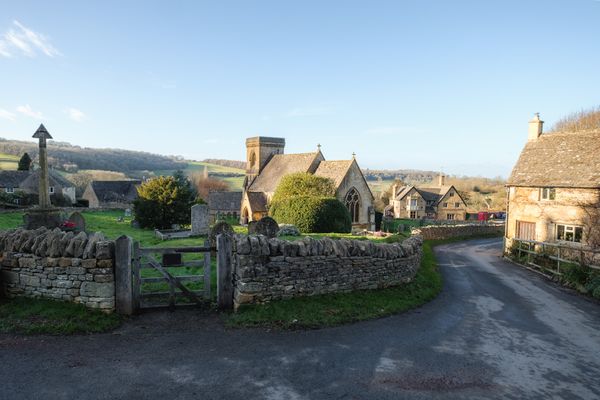The Sherwood Forest is famous for the legend of Robin Hood, a figure who – according to folklore – lived here with his band of merry men. You may associate Robin Hood with the 1991 Prince of Thieves film, or the animated Disney classic. But walking in his footsteps through the Sherwood Forest for ourselves, it’s clear that the legend of the man who took from the rich to give to the poor lives on in this ancient woodland. During our stay at the nearby Sherwood Pines, we made the pilgrimage to the Major Oak in the heart of the forest to learn more about its history and connection to Robin Hood.
Table of Contents
Getting there
The Major Oak is situated in the RSPB’s Sherwood Forest site – see the map below. There is a car park across the road from the visitors centre which, at the time of writing, costs £5 to park in all day (but it’s free to RSPB members). Considering there are no other charges to walk the trails through the Forest here, we feel it’s a small price to pay as you can spend as long as you like admiring the beautiful forest and its wildlife! There is also an accessible car park at the visitor centre for those with mobility issues.
Starting at the visitor centre
In 2018, after a £5 million renovation project, the new visitor centre for the Sherwood Forest opened to the public. This huge glass and wood building is where you’ll start your adventure into the woods! There are toilets, motorised wheelchair hire, a gift shop and a dog-friendly cafe in the centre. We chose not to eat here, but judging from other reviews it offers the kind of food and drink you can expect from any standard cafe. Still, there’s indoor and outdoor seating available and the cafe area is modern and bright, thanks to the towering floor-to-ceiling windows. The gift shop has Robin Hood memorabilia mostly aimed at young children, though the majority of the items for sale are bird and wildlife based, such as wildflower seeds, binoculars and bird-identifying sheets – it is an RSPB site, after all.
Even if you’re not shopping, you’ll have to go through the gift shop and exit via the left-hand doors to see the map of the walking trails before you set off. This wasn’t obvious to us, and we walked around the building onto the forest, missing the initial trail map altogether. Thankfully the trails are well signposted once you’re on them!
The trails
There are 4 walking routes here:
Giants Trail – 1.2km. The shortest route, highlighting some of the ginormous ancient trees on the forest (including the Major Oak, of course) where you’ll learn more about the habitats they provide for wildlife. Strangely this is the only route that doesn’t begin from the visitors centre, so you’ll need to allow more time for this walk as you’ll begin by following one of the other trails.
Major Oak Trail – 2.4km. If you only have around an hour to spend here, this is the trail for you. The Oak itself is only a 15-20 minute walk from the visitor centre, so you can see the tree and loop back to the visitors centre in under 45 minutes.
Greenwood Trail – 3.2km. The RSPB states that this route is designed to celebrate seasonal shifts, as the landscape and wildlife sounds change throughout the year. This route takes you further into the forest than the Major Oak trail, where you can stop and watch the birds that feed at the many RSPB feeding stations in the woods.
Wildwood Trail – 6.4km. The longest of the routes, this one is ideal for adventurers! It’s also the quietest as the route takes you deep into the forest and away from the Oak before looping back around. With many visitors choosing the shortest route to see the Oak, you may find you have this trail mostly to yourself.
We chose to take the Wildwood Trail and we were not disappointed – we saw only 4 or 5 other walkers as we made our way through the forest. This meant that we could pause and admire the awe-inspiring ancient trees, snap photos of feeding birds without being disturbed, and enjoy the complete tranquility of the Sherwood Forest with a soundtrack of nothing more than bird song and rustling leaves. It took us just over 2 hours to complete this route from start to finish – and that was with all our photo stops! If you have the time to take this trail we’d highly recommend it, so you can appreciate the true serenity of the forest. There are a couple of maps dotted around the trail, and small signs at each junction on the pathway so you can’t lose your way.
It’s worth mentioning that if you choose to take this longer trail, there is very little to remind you that you’re visiting a site of special interest and not any other forest. There aren’t information boards with facts about Robin Hood, and save for a tiny, red shield we saw on a post, there aren’t even any nods to the 12th century when he was supposed to have lived. Researching online we found that there are a few organised tours throughout the year with a guide in costume, and a week-long Robin Hood festival on site in the Summer. But if you’re visiting on any other day, you won’t find any historical information about Robin Hood and the Major Oak until you arrive at the tree itself.
The Major Oak
We decided to walk the Wildwood trail clockwise, meaning we looped around the forest first before seeing the Oak near the end of the trail. If you’re visiting on the weekend, or in the Summer, we’d recommend arriving as early as you can and heading to the Oak first if you’d prefer to view it with less visitors around you. As we took our trip to the Oak on a particularly quiet and chilly mid-week day in March, we arrived at the tree to find we were the only visitors there! The site attracts around 850,000 people each year, so it’s worth planning your visit in advance to avoid crowds.
There have been fences in place since 1975 to prevent visitors from approaching the tree, as previously the footfall damaged the Oak’s roots below the ground. In order to preserve the branches that make up its 28-metre-wide canopy, structural supports are also in place under larger boughs. It’s a shame to not be able to stand in the hollow trunk where Robin Hood once stood, but it’s important to preserve this piece of history.
We took our time here admiring the enormity of the Oak – its size is hard to convey in photos! From some informational boards here we learnt that the tree is estimated to be between 800-1100 years old, and weighs around 23 tonnes! As for the legend of Robin Hood, it’s said that he used the Major Oak as a meeting place with his merry men – hollow trees were useful to outlaws as they provided hiding places for illegal items and criminals alike. More information boards showed photos of the Oak in 1907, as well as references to the tree in illustrations and architecture. While we would have enjoyed a few more information boards throughout the forest, the few here are packed with facts and we were glad to learn more about the history of this ancient forest.
Is it worth visiting?
All in all we loved exploring the Sherwood Forest, though you should tailor your visit here to what you’ve come to see. If you’re only interested in the Major Oak and Robin Hood, one of the shorter trails is enough to give you an insight into why this place is historically significant. While the site is owned and maintained by the RSPB, we feel they could have done more to bring the legend of Robin Hood to life. Between the gift shop being crammed with 90% bird-related items and the RSPB volunteer grabbing passers-by at the visitors centre in order to recruit new members, the historic past of this forest is in danger of being overshadowed by the conservation work taking place for the future.
We will say that we believe it’s a great day out for families – with a play area near the visitors centre and information boards on trees along the shorter routes telling you more about the species and the wildlife that inhabit them. The visitors centre also has an amphitheatre-style seating space outside, so if you don’t fancy the cafe, bring your own picnic and soak up the forest atmosphere!
We feel we enjoyed the best of both worlds, in that we got our history fix from visiting the Major Oak, and also a beautiful forest walk amongst wildlife along the Wildwood Trail. With a flat parking fee no matter how long you stay, you may as well take it all in at your leisure! No matter why you’re visiting the area, we’d recommend stopping off to see this legendary place for yourself.
If you found this post helpful, please support our blog by donating as little as £1 to our running costs! Thank-you!

We are Chris+Suze







